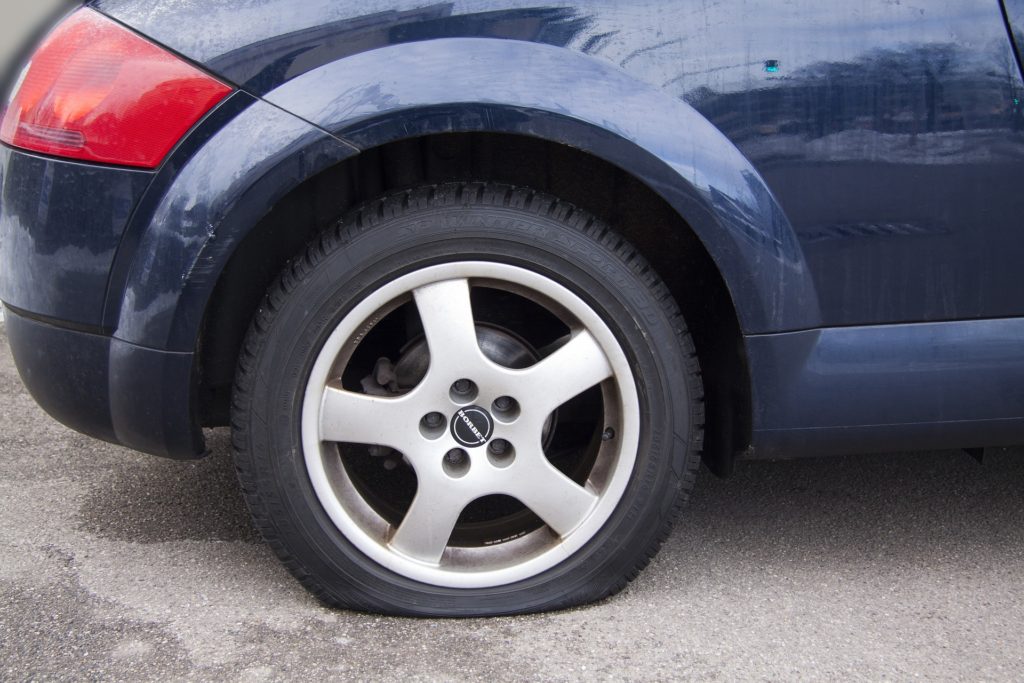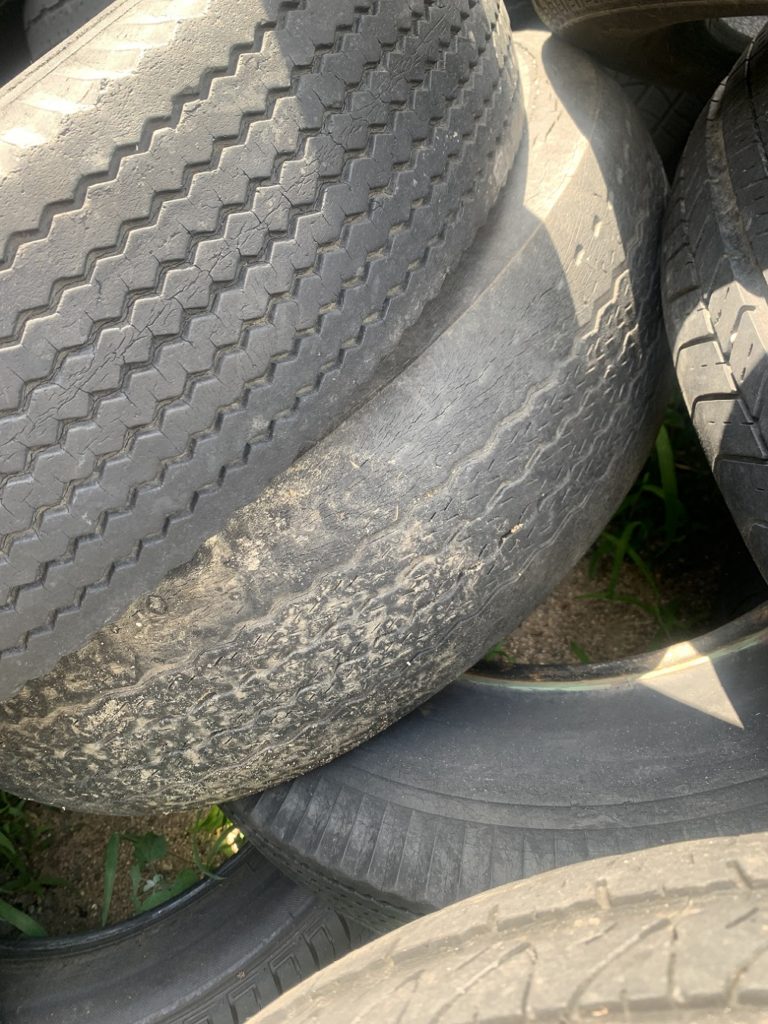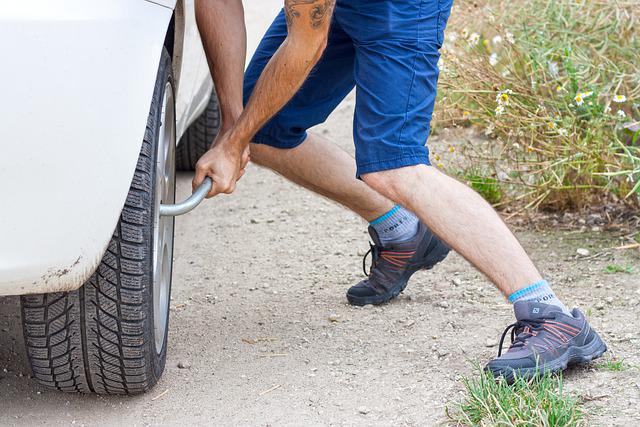Follow these steps once a month
2. Always be on the lookout for pot holes! Obviously everyone tries to avoid pot holes but sometimes it can be to dark or you see the pot hole to late. Inevitably everyone hits pot holes from time to time. Damage from pot holes will depend on your speed and how you hit the pot hole. (dead on or just part of it) After hitting a pot hole, pull over and check your tires, especially the bead of the tire that took most of the impact. (check for bubbles on the sidewall of that tire)
3. Always be aware of the amount of air you have in your tires. Over inflated tires can be just as dangerous as under inflated tires. You can check tires manually by using a tire gauge, of if your car is equipped with TPMS sensors, your car will tell you the air level in each tire, or at least when they are low. To learn how to check tire pressure check out this article.
EXTRA STEP: Rotate tires. Rotating your tires is important for your tires long term health. Rotating your tires regularly will help prevent your tires from wearing unevenly. Rotate your tires every 5,000 – 10,000 miles so about every other oil change, rotate your tires. After getting your vehicle serviced, ask your mechanic/technician for a tire depth reading so you can keep track on your tires overall health.

what causes a flat tire?
A tire can go flat for a variety of reasons, but the most common cause is a puncture. Whether it’s a sharp object like a nail or a piece of glass, or simply from wear and tear, a puncture can create a hole in the tire that gradually lets air escape. Another common cause of flats is rim damage. If the wheel hits a curb or pothole too hard, it can bend or break the rim, which can then cause the tire to leak air. In some cases, flats can also be caused by problems with the valve stem, which is the part of the tire that you use to add or release air. If the valve stem becomes damaged or dislodged, air will slowly leak out of the tire. While flats are always inconvenient, knowing the most common causes can help you be better prepared to deal with them.

what happens if you drive on a flat tire?
It is not recommended to drive on a flat tire, as it can cause damage to the tire and the wheel. Driving on a flat tire can also put stress on other parts of the vehicle, such as the suspension and axles. If a tire goes flat while you are driving, it is best to pull over to the side of the road and call for roadside assistance. If you must drive on a flat tire, go slowly and avoid making any sudden turns or maneuvers. Additionally, be sure to keep an eye on your speedometer and watch for any signs of shaking or vibration. Driving on a flat tire is not ideal, but if you must do so, following these tips can help to minimize any damage.

how to change a tire & put a spare on?
Before beginning, make sure that the jack is the right size for your car. You will also need a wrench to loosen the bolts on the wheel. Once you have these supplies, park your car on level ground and engage the parking brake. Place the jack under the frame of the car at one of the designated jacking points. At this point, you can use the wrench to loosen the bolts on the wheel. Next, slowly turn the jack handle to lift the car until the tire is about six inches off the ground. Finish removing the lug nuts and remove the wheel and set it aside. To put on the spare tire, line up the holes in the tire with the bolts on the wheel. Once they are lined up, thread on each bolt by hand before tightening them with the wrench. Lower the car back to the ground and tighten all of the bolts with the wrench. Finally, test drive the car slowly to make sure that the spare tire is securely in place.
bonus tips
1. All of these steps are equally important even if you have run flat tires.
2. Always keep tire caps on your tire valves. If your missing some, you can ask your local mechanic or buy some here.
